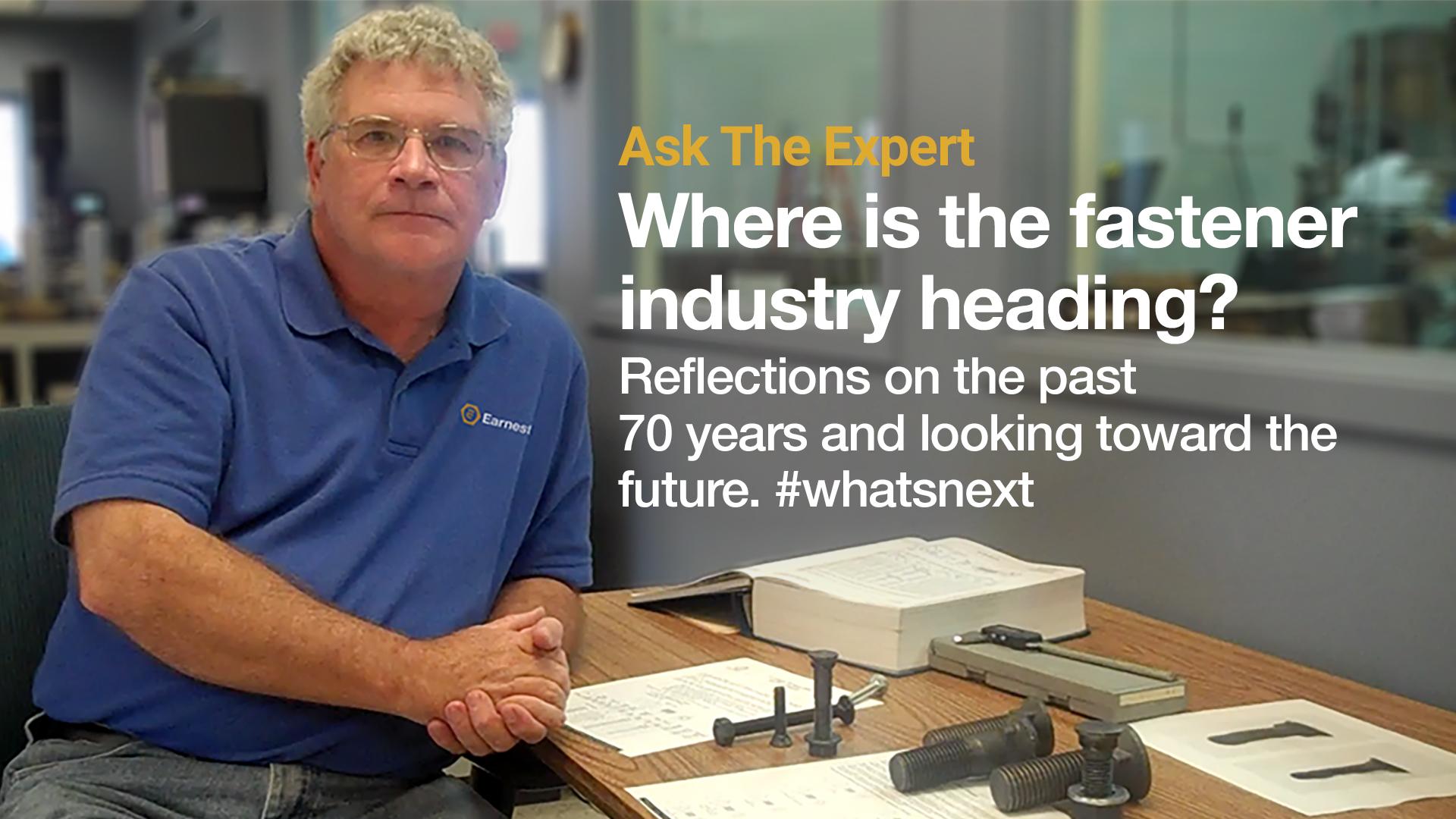
The Future of Fasteners
As Earnest celebrates 70 years in the fastener industry, I thought I would reflect back on my nearly 40 years of working in the industry and at what the future may bring. Most of my career has been dealing with inch sizes of high strength steel and alloy steel threaded fasteners. The early years of my career dealt with product development, and now I deal with the applications side of the business.
The fastener industry has a reputation as an industry where not much innovation takes place. This may be true in regards to nuts and bolts (the basic geometries for nuts and bolts can be traced back over 150 years) but quite a few changes have occurred in how we Make, Test, Coat and Distribute fasteners.
The equipment that is used to manufacturer fasteners has evolved from the old hot forming dies (that harken back to the black smith days) to fully automatic multi-die cold forming machines that utilize process controls to produce uniform high quality fasteners. I expect that we will continue to see innovation in the equipment that is used to manufacture fasteners. This innovation will help to reduce the need to try to inspect quality into the product. New technologies like 3D printing look very promising in creating a completely new way to make parts.
We have made large strides in standardizations in our industry (at least with inch size fasteners). The fastener quality act has increased awareness and has added to the standardization of the testing that is required to certify a fasteners strength level. I am not sure why I have to buy a revised spec every couple of years when there has not been any major changes to the spec but our industry continues to review and make improvements on the requirements that define a fastener. As new manufacturing processes are developed, our standards are being constantly updated to keep up with new technology.
Platings and coatings have seem a tremendous amount of change over the last 40 years. When I started, the typical plating offering was zinc with clear chromate or zinc with yellow chromate. Like cad platings before it, zinc yellow (hexavalent) chromate has been deemed a hazardous substance and we are seeing restrictions on its use. The coating industry has stepped up with innovative dip spin coating that contain zinc and aluminum flakes that are environmentally friendly. These types of coatings provide superior corrosion protection as compared to the platings I am used to dealing with. I expect to see continued advances in this segment of the industry that will improve the life and reliability of the fasteners.
The 1980’s through the 1990’s resulted in consolidations and acquisitions in both the manufacturers and with distributors of fasteners. Much of the production of the lower grade nuts and bolts has moved to offshore (mainly Asia) countries. I hear from customers that they cannot find domestic manufactured low-grade fasteners unless they purchase excessive quantities. With innovative new technology being used to manufacture fasteners, I see a reversal of this trend and expect US fastening manufacturing coming back.
